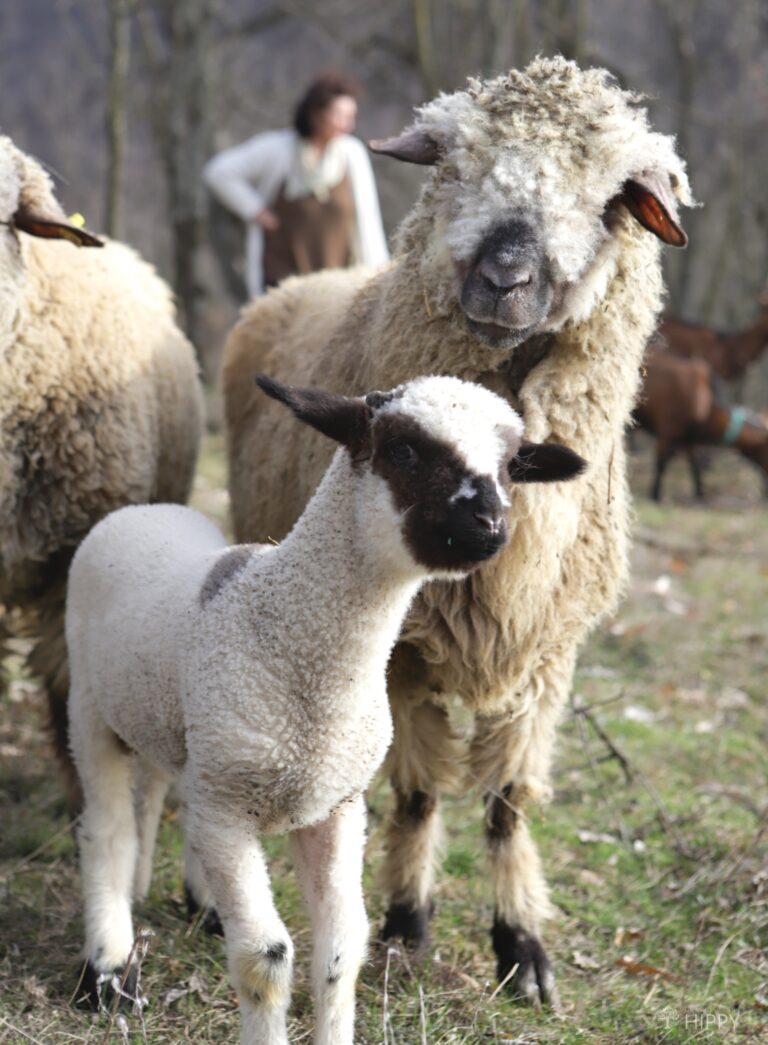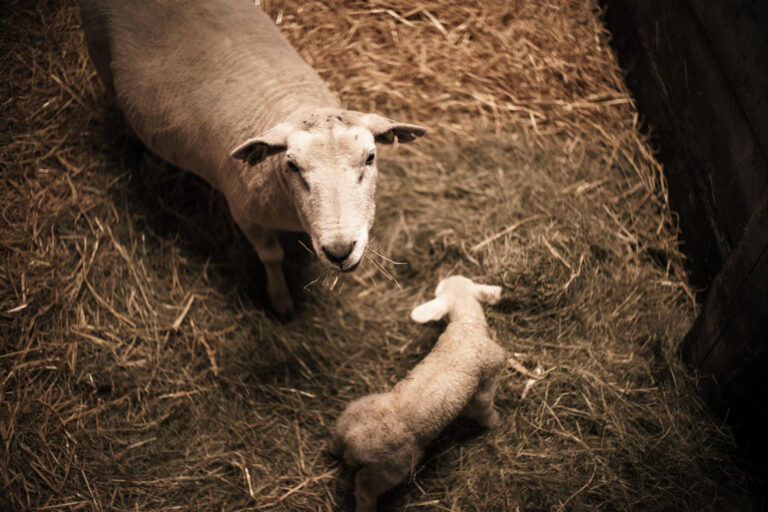If you’re thinking about raising sheep, it’s only natural that you’ll begin to wonder about the ins and outs of breeding and the lambing process.
We all know there’s a gestation period for pregnant women, but what about sheep? What’s the gestation period for sheep?
Sheep gestate for around 147 days on average. The amount of time it takes for an ewe to carry a lamb to term depends on a variety of factors, such as her age, her overall health, the breed, and the environment.

If you’re interested in learning more about keeping sheep as pets or farm animals, keep reading! We’ll go over everything you need to know about when to expect newborn lambs.
What’s the Gestation Period for Sheep?
The gestation period for sheep is between 144 and 152 days. This means that a ewe will carry her lambs for roughly 4 months before giving birth.
Generally, medium-wool and meat-type breeds have a shorter gestation period than fine-wool breeds.
There are other factors that can impact the gestation period, too, including the age of the ewe (older sheep tend to have shorter pregnancies than younger ones, though not always) and whether she is carrying multiples.
Even high temperatures and higher levels of nutrition can shorten the gestation period by a couple of days.
During this time, a pregnant sheep will undergo many physical changes in order to prepare for the delivery.
For example, her abdomen will begin to swell as the lambs inside grow larger, and she may start to develop an increased appetite in order to provide enough nutrients for both herself and her young.
As the birth approaches, she may also exhibit behavioral changes such as restlessness or anxiousness, and she may act more protective of her newborn lambs by maintaining close proximity or being especially vocal.
Overall, the gestation period for sheep is an important time that plays a crucial role in ensuring the health and well-being of both mother and babies.
As a farmer, it’s important that you be aware of the signs of pregnancy to help your ewes make it full-term and to deliver healthy lambs.
How Many Times Does a Sheep Give Birth Per Year?
Again, it depends on the breed. Some breeds, like Icelandics, are seasonal breeders that will only come into heat at certain times of the year (usually triggered by changes in daylight and day length).
Other sheep will give birth to one or two lambs multiple times a year.
This reproductive capacity helps to ensure that sheep populations remain strong even in the face of predation and disease.
When Can Ewes Become Pregnant?
The timing of pregnancy in female sheep, known as ewes, varies depending on a number of factors. Again, breed, size, and environmental factors all play roles.
Generally speaking, ewes can become pregnant (and have a healthy pregnancy) when they are around 10 to 12 months old.
However, this can vary depending on their health and breeding status. If your ewes are smaller in stature or are being bred to larger rams, you should wait even longer than 12 months to breed them.
Some ewes may experience seasonal infertility during the spring and summer months due to fluctuations in hormone levels.
How to Figure Out How Far Along Your Sheep Are
There are a number of different methods you can use to figure out how far along your sheep are, including checking for behavioral changes, checking for physical changes, and performing ultrasound scans.
To tell if your sheep is pregnant, you can do an ultrasound scan pretty early on. This will help you see the individual embryo sacks.
It can be harder to tell how many lambs a ewe is pregnant with the further along you get in the pregnancy.
Although you can watch your sheep to see if they get bigger as a method to determine if they are pregnant, this isn’t always the most reliable method – lambs do the majority of growing in the last month, so you might not be able to tell until the very end.
Other signs of pregnancy include:
- The vulva of the ewe becomes puffy
- Ewes begin to “waddle” and walk in a more imbalance fashion
- Bagging up (usually occurs in the last few weeks of pregnancy as the milk comes in)
- Colostrum production
- Visible lamb movement
- Behavioral changes, such as difficulty getting up or walking on the knees instead of standing up
- Teeth grinding and lip curling
For the most accurate results, it is generally best to combine several different methods and track your results over time.
By doing so, you can ensure that your sheep have the optimal possible chance of giving birth without any unnecessary risks or complications.

How Long Does Lambing Last?
The delivery of a lamb from a pregnant ewe can vary in length depending on a number of different factors.
Generally speaking, the process often takes several hours and is often quite painful – though totally natural – for the ewe.
Early signs of labor are often undetectable by the farmer, but may include signs like pacing, pawing at the ground, and breathing heavily.
The ewe may appear restless. This can happen as early as a couple of days before lambing.
During the final stage of labor, contractions will cause the ewe to be restless, pace around, and may even vocalize in distress.
This stage culminates with the expulsion of the water bag, after which lambs appear within the next hour or so.
The placenta and amniotic fluids are delivered shortly after but the ewe may have discharge or light bleeding for a few days afterward.
Overall, it can take anywhere from several hours to a full day or more for an ewe to give birth to her lamb or lambs.
However, with proper care and attention during this time period, both mother and baby should be able to thrive and develop a strong bond.
At What Age Does Sheep Stop Breeding?
There is no definitive age at which sheep stop breeding, as this can vary depending on a number of factors, including breed and genetics.
Most ewes will stop reproducing in their early teens, at around 10 to 11 years of age, though some may continue to be fertile until the day they die.
The average lifespan is around 13 years, to give you an idea of what to expect.
Factors such as nutrition and stress levels can also affect a sheep’s overall health and reproductive ability, so it is important to maintain a balanced diet and provide adequate living conditions for these animals.
Ultimately, the best way to determine when a sheep stops mating is by closely monitoring its behavior and physical condition over time.
Sheep Gestation Basics: Final Notes
If you’re looking for a little more information on how to take care of your sheep, or if you want to try your hand at lambing this year, be sure to save the information above for your reference.
And, as always, feel free to leave a comment if you have any questions. We hope you have a great season and that your lambs are healthy and happy!

Rebekah is a full-time homesteader. On her 22 acres, she raises chickens, sheep, and bees, not to mention she grows a wide variety of veggies. She has a huge greenhouse and does lots of DIY projects with her husband in her ever-growing homesteading endeavor. Learn more about Rebekah here.
